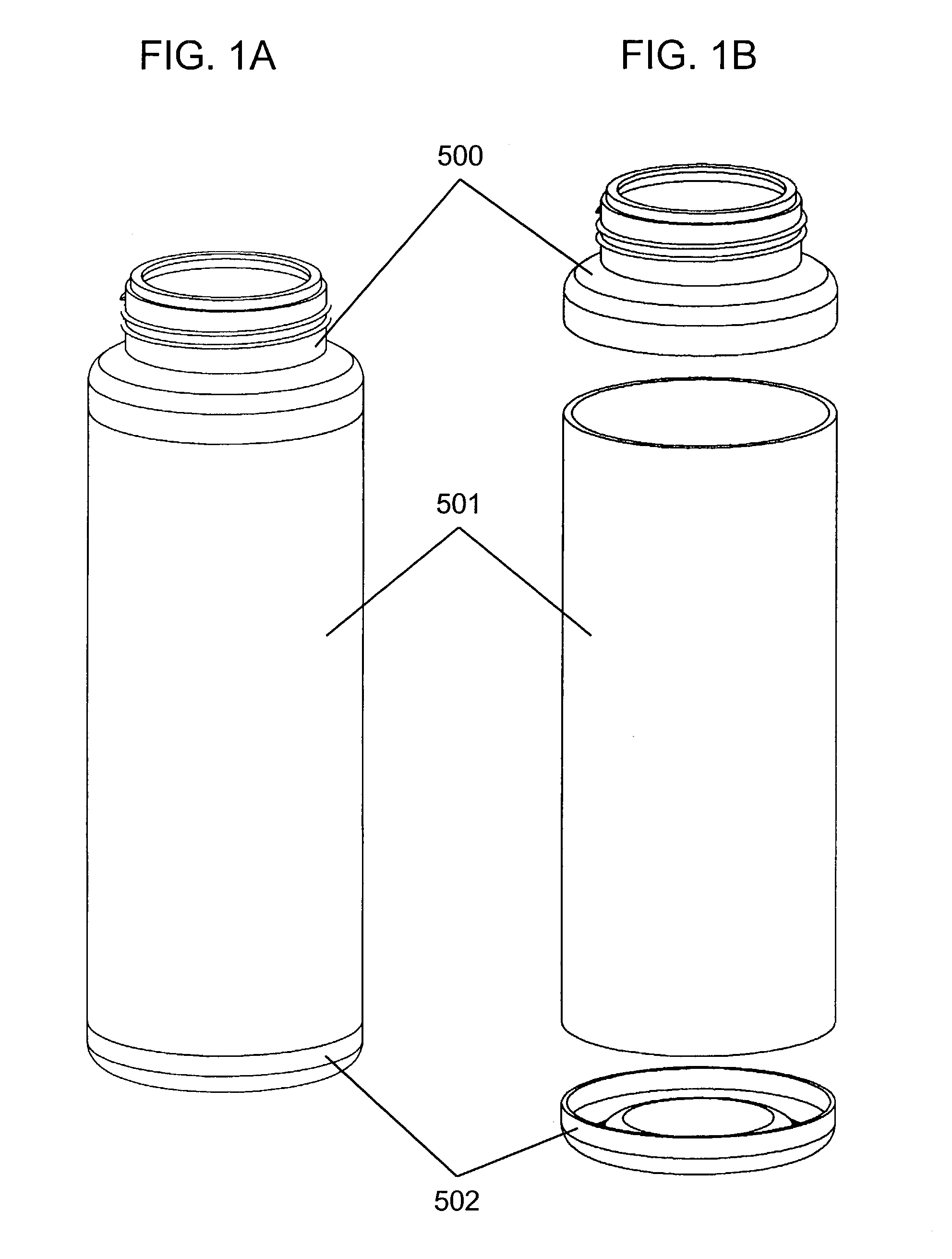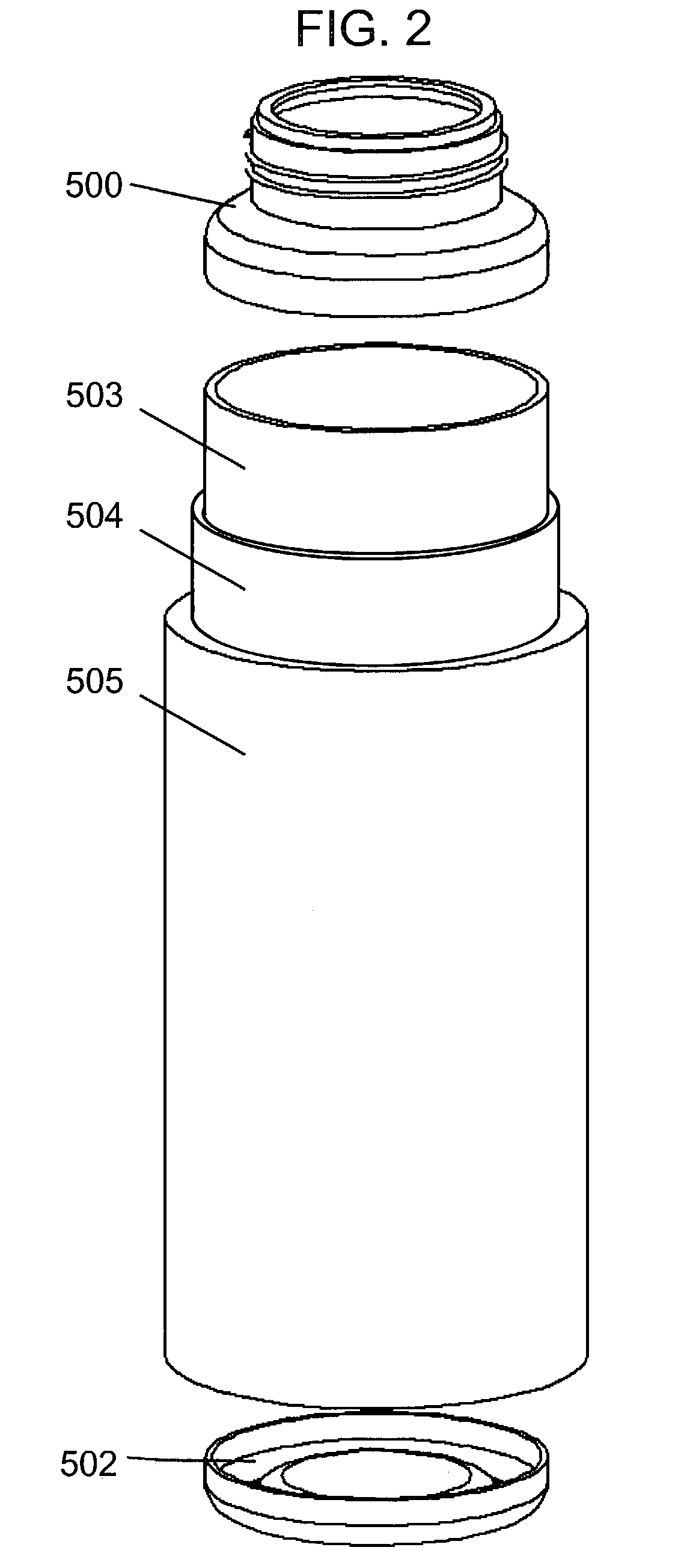Self-cooling containers for liquids
a container and liquid technology, applied in rigid containers, non-pressure vessels, packaging goods types, etc., can solve the problems of liquid volume displacement loss in containers, excessive weight, and reduced cooling efficiency, and achieve the effect of improving cooling efficiency
- Summary
- Abstract
- Description
- Claims
- Application Information
AI Technical Summary
Benefits of technology
Problems solved by technology
Method used
Image
Examples
Embodiment Construction
[0033]Disclosed herein are containers and enclosures that use pervaporative cooling to cool a liquid or item residing in such container or enclosure. In preferred embodiments, the containers are comprised of porous vent materials, also called porous matrices. In one embodiment the container forms part of a pervaporative cooling garment.
[0034]Porous matrices may be made of any of a wide variety of materials, including, but not limited to, plastics, elastomers, metals, glass, and ceramics. Combinations of plastics, elastomers, metals, glasses, or ceramics may also be used. The combinations may be intimate, such as from blending of two or more components to become co-sintered, or may be layered, such as from laminate structures derived from two or more materials. Combinations of different plastics, elastomers, metals, glasses, or ceramics can also be co-sintered or fabricated into laminate structures for use in pervaporative containers. Preferred plastics for porous vent materials incl...
PUM
 Login to View More
Login to View More Abstract
Description
Claims
Application Information
 Login to View More
Login to View More - R&D
- Intellectual Property
- Life Sciences
- Materials
- Tech Scout
- Unparalleled Data Quality
- Higher Quality Content
- 60% Fewer Hallucinations
Browse by: Latest US Patents, China's latest patents, Technical Efficacy Thesaurus, Application Domain, Technology Topic, Popular Technical Reports.
© 2025 PatSnap. All rights reserved.Legal|Privacy policy|Modern Slavery Act Transparency Statement|Sitemap|About US| Contact US: help@patsnap.com



